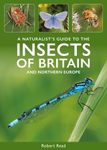Field / Identification Guide
By: Pradeep Sachdeva(Author), Vidya Tongbram(Author)
176 pages, 250 colour photos
![A Naturalist's Guide to the Trees & Shrubs of India A Naturalist's Guide to the Trees & Shrubs of India]()
Click to have a closer look
About this book
Customer reviews
Biography
Related titles
About this book
This easy-to-use identification guide to the 280 tree and shrub species most commonly seen in India is perfect for resident and visitor alike. High quality photographs from India's top nature photographers are accompanied by detailed species descriptions, which include nomenclature, size, distribution and habitat. The user-friendly introduction covers geography and climate, vegetation, opportunities for naturalists and the main sites for viewing the listed species. Also included is an all-important checklist of all of the trees and shrubs of India encompassing, for each species, its common and scientific name, its status in each state as well as its global IUCN status as at 2015.
Customer Reviews (1)
-
Handy pocket guide to the common urban trees
By
Gehan de Silva Wijeyeratne
2 Jun 2017
Written for Paperback
This book and its sister titles on Mammals and Butterflies arrived in a very timely fashion, a day before I flew out to Delhi as an invited speaker at the Uttar Pradesh Bird Fair 2016. The flora of any Asian country is a pretty impossible subject to get your head around on a short visit. You can live for decades in an Asian country and still struggle to learn a significant fraction of the species. The best one can do is to get a handle on the 100 or most common species so that there is at least a sense of being familiar with the common trees. Prior to my trip, I looked through my library. I have over a dozen books to the trees of India. A drawback with many of them is that they are big and not really suitable for field use when you are already carrying binoculars, camera gear and a field guide to birds.
The compact size and shape and light weight of the Naturalist's Guide Series is convenient and it is not surprising that I opted to take these titles. Surprisingly the title to the trees and shrubs did not compromise on the species coverage, as 196 species are packed into this slim volume. The power of images is such that a couple of well-chosen images can dispense with needing a large body of text on identification.
It may surprise people to know that a photographic guide to trees is actually harder than one for birds or mammals. With many vertebrate species, often one image will suffice. You don't need several images to show what a zebra is. With trees, ideally, many images are needed showing the flowers, the fruit, the leaves, the bark and the whole tree. Attempting this, even for 200 species rapidly becomes a lifetime project and the authors and publisher have to compromise in finding partial coverage that helps a user to identify a species.
In this respect, the book worked well and before long on the excursions organised for the invited speakers, I had become the expert dipping into the book to name some of the commoner road-side species.
Road-side species in different countries in Asia are often the same trees, typically trees with an ornamental stature or beautiful flowers, often introduced in colonial times. Tree species with which urban and suburban Asians grow up with are quite often from tropical America, but don't spoil it by telling them. But much the same applies to urban plants in the USA and Europe where urban trees are often non-native, brought in from similar latitudes. London is like a vast arboretum for trees from temperate regions all over the world and most Britons are astonished when I tell them that Britain has only around 35 native tree species as a result of the ice ages which killed off most of their tree species.
With this book a visitor to Asia will soon be able to put a name to local trees such as the familiar Mango and Neem as well as a host of introduced trees from South America (e.g. White Silk Cotton) and Australian (e.g. River Red Gum) which is now part of the Asian landscape as much as no village of any size in Britain is without an Indian curry house.
Other comments
All three titles adopt commonplace principles in photographic field guides with a focus on ID, but also covering distribution and habitat, behaviour etc. The Naturalist Guide series also includes a full checklist of species for animals. For plants, this is reduced to a list of families.
Given the huge numbers of species found on the Indian subcontinent, sometimes less is more. Books like these will make natural history more accessible as they are highly visual and cover a manageable number of species for the beginner or visitor to get their head around.
Gehan de Silva Wijeyeratne
8 of 8 found this helpful
-
Was this helpful to you? Yes No
Biography
Pradeep Sachdeva is an eminent architect. He specialises in landscape projects indulging his passion for trees, which he has extensively researched and photographed. His colleague, Vidya Tongbram is an enthusiastic tree- spotter and photographer.
Field / Identification Guide
By: Pradeep Sachdeva(Author), Vidya Tongbram(Author)
176 pages, 250 colour photos

















































